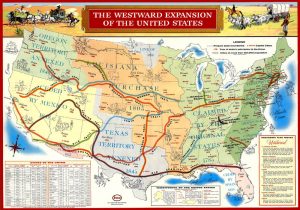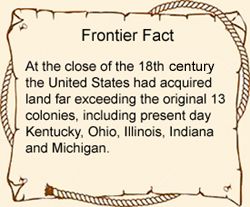At the close of the Civil War, Kansas, and Texas were sentinel states on the middle border. Beyond the Rocky Mountains, California, Oregon, and Nevada stood guard, the last of them having been just admitted to furnish another vote for the 15th Amendment abolishing slavery. Between the near and far frontiers lay a vast reach of plain, desert, plateau, and mountain, almost wholly undeveloped.
A broad domain, extending from Canada to Mexico and embracing the regions including Washington, Idaho, Wyoming, Montana, Utah, Arizona, New Mexico, the Dakotas, and Oklahoma, that had fewer than half a million inhabitants. It was laid out into territories, each administered under a governor appointed by the President and Senate. As soon as there was the requisite number of inhabitants, a legislature was elected by the voters.
No railway line stretched across the desert. St. Joseph, Missouri, on the Missouri River, was the terminus of the Eastern lines. It required 25 days for a passenger to make the overland journey to California by the stagecoach system, established in 1858, and more than ten days for the swift Pony Express, organized in 1860, to carry a letter to San Francisco. Indians still roamed the plains and deserts, and more than one powerful tribe disputed the white man’s title to the soil.
By Charles Austin Beard and Mary Ritter Beard; History of the United States, Macmillan, 1921. Compiled by Kathy Alexander/Legends of America, updated March 2023.
Also See:



